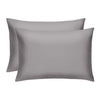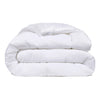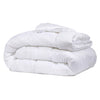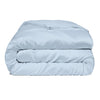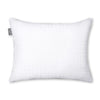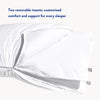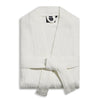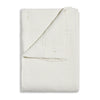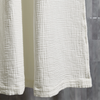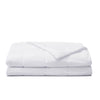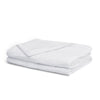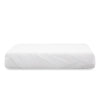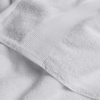The Daily Miracle
How To Get Oil Out Of Clothes: Step By Step
Published
November 29, 2024
Author
John Tsenekos

Oil stains on clothing are a common yet frustrating issue that many of us encounter, whether they're from a kitchen mishap or some other unexpected spill. These stains can be intimidating, but with the right approach, they are far from permanent. This guide offers a step-by-step process to help you effectively remove oil stains, ensuring your clothes remain in top condition and ready for any occasion.
Why Does Oil Stain Clothes?
Oil stains clothes because of how oil interacts with fabric fibers. Oils are made up of long-chain fatty acids that repel water, making them difficult to wash out with water-based cleaners. When oil gets on clothing, it quickly seeps into the fibers and sticks due to its thick nature.
Fabrics, being absorbent, can trap the oil within their weave, making the stain even harder to remove. Over time, oil can oxidize, leading to discoloration and making the stain more noticeable. These factors make oil stains particularly stubborn, requiring specific cleaning methods and products to effectively remove them from clothing.
Can Oil Be Fully Removed From Clothing?
You can in fact get oil out of clothes, but it takes a bit of strategy. Usually, you'll need to use specific cleaners like dish soap or even WD-40, which are great at breaking down oil so it can be lifted from the fabric. It's best to tackle oil stains as soon as possible because the longer they sit, the tougher they are to remove.
A Step By Step Guide on How To Get Oil Out of Clothes
Step 1: Blot the oil stain, then sprinkle baking soda over it.
If you've just spilled the oil onto your clothes, immediately (but gently) blot the oil stain with a clean paper towel or cloth. If you're able, sprinkle baking soda on the stain to help absorb the oil. This step helps absorb excess oil without spreading it further into the fabric. Avoid rubbing, as this can push the oil deeper into the fibers, making the stain more difficult to remove.
Step 2: Apply a pre-treatment solution.
Before washing the item, you'll want to apply a pre-treatment solution or a small amount of dish soap directly onto the oil or grease stain. These products are specifically formulated to break down oil molecules, making them easier to lift from the fabric. Allow the solution to sit for about 5-10 minutes, giving it time to penetrate and loosen the stain, then sprinkle a small amount of baking soda (again) onto the area to help lift the remaining oil particles.
Step 3: Gently scrub the stain.
Using a soft-bristled brush or an old toothbrush, gently scrub the treated area. This action helps to further break up the oil particles and lift them from the fabric. Be careful not to scrub too hard, as this can damage delicate fabrics.
Step 4: Rinse with hot water.
Rinse the garment under hot or warm water. The heat helps dissolve the oil residues, making them easier to wash away. Ensure that the water flows through the back of the stain to push the oil out of the fabric fibers.
Step 5: Wash the garment.
Wash the garment in the hottest water safe for the fabric, using a laundry detergent that is effective against grease stains. Check the care label for temperature guidelines. This step is essential to remove any remaining oil and ensure the stain is completely gone.
We recommend Miracle Made® laundry detergent sheets because of their powerful deep cleaning power that helps to remove stains while still being kind to skin thanks to non-toxic, hypoallergenic ingredients. Plus, they're Earth-friendly!
Step 6: Inspect before drying.
Before placing the garment in the dryer, inspect the stained area to ensure the oil stain is fully removed. Heat from the dryer can set any remaining traces of the stain, making it nearly impossible to remove afterward. If traces of the stain remain, repeat the previous steps.
Step 7: Dry the garment.
Once you are confident that the oil stain is gone, dry the garment according to the care label instructions. Air drying is often recommended for delicate fabrics to prevent any potential damage from high heat.
What Household Items Can You Use To Pre-Treat Oil Stains?
When you don't have a stain-specific pre-treatment available, or if you just prefer to use something around the house, here are a few options:
- Dish soap is the most popular choice for pre-treating oil and grease stains due to its grease-cutting properties.
- Baking soda is another versatile option—it acts as an absorbent, drawing oil out of the fabric when sprinkled generously over the stain.
- Cornstarch or baby powder can also be used similarly to baking soda, absorbing excess oil and preventing it from setting into the fibers.
- WD-40 or white vinegar can be applied to the stain to help dissolve oil residues, though they should be used with caution on delicate fabrics.
Additionally, laundry detergents specifically designed for grease removal can be used as a pre-treatment, offering a targeted approach to tackling stubborn oil stains.
How To Get Oil Stains Out of Clothes Already Washed and Dried
Removing oil stains from clothes that have already been washed and dried can be challenging, but it's not impossible. Start by applying a generous amount of liquid dish soap directly onto the stain, as its grease-cutting properties can help break down the oil even after it has set. Gently work the soap into the fabric using a soft brush or your fingers, ensuring it penetrates the fibers.
Next, sprinkle baking soda over the treated area and let it sit for about 30 minutes; this will help absorb any remaining oil. Afterward, rinse the garment with hot water, as hot as the fabric care label allows, to help dissolve the oil residues.
If the stain persists, consider using a commercial stain remover specifically designed for grease stains, following the product instructions carefully. Finally, wash the garment again in the hottest water safe for the fabric, and inspect the stain before drying. Repeat the process if necessary, as persistence is key to successfully removing set-in oil stains.
Do Different Fabrics Require Different Techniques To Remove Oil Stains?
Yes, different fabrics do require distinct techniques when it comes to removing oil stains, as each type of fabric has unique properties that affect how it interacts with cleaning agents.
Delicate fabrics like silk and wool are more sensitive and can be easily damaged by harsh chemicals or vigorous scrubbing, so it's essential to use gentle, fabric-specific stain removers and cold water to prevent damage.
On the other hand, more durable fabrics such as cotton and polyester can typically withstand stronger treatments, including hot water and more robust scrubbing, which can be effective in breaking down and removing oil stains. Additionally, synthetic fabrics may require special attention to avoid heat damage, as high temperatures can cause them to melt or warp.
The Bottom Line
Oil stains can be tough, but they're not impossible to remove. With the right tips and tricks, you can get rid of these marks and get your clothes back to where they started. Whether you're dealing with a new spill or an old stain, knowing how different fabrics react and using common household items can really help. With these strategies, you'll be ready to keep your wardrobe in top shape, no matter what you're up to!
Sources:


